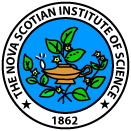
MEETINGS
MEMBERSHIP
PROCEEDINGS
ABSTRACTS
STUDENTS
LIBRARY
EXECUTIVE
BROCHURE
HALL OF FAME
HISTORY
LINKS
Monthly programmes and abstracts of meetings of the NSIS
|
1998–1999 1999–2000 2000–2001 2001–2002 |
2002–2003 2003–2004 2004–2005 2005–2006 |
Speaker List (1998–present)
7 October 2002
Alien Invasions off our Coast
Robert Scheibling, Department of Biology, Dalhousie UniversityAs accidental introductions of non-native species to coastal ecosystems accelerate on a global scale, there is a growing and urgent concern about the potential threats to biodiversity and the integrity of natural marine communities. Major changes in the numbers and kinds of species have occurred during the last two decades. These “ecosystem phase shifts” are associated with sequential introductions of three non-native species. These changes will be documented with records of species abundance at long-term monitoring sites, undersea videos and slides. Dr. Scheibling will present results of experimenta studies that explore interactions among native and non-native species that drive these phase shifts. The possible implications of these phase shifts for the structure and functioning of this ecosystem and the resources we extract from it will be discussed.
4 November 2002 (Panel Discussion)
Science Needs for the Sustainable Management of Terrestrial Natural Resources in Nova Scotia
Panelists:
-
Eldon Gunn, Department of Industrial Engineering, Dalhousie University
“Science Needs for Forest Management”
-
Martin Willison, Department of Biology, Dalhousie University
“Managing to be Sustainable: The Science and Resource Spectrum”
-
Colin Stewart, Conservation Chair, Halifax Field Naturalists
“Defining the Pieces: A Tinker's Nightmare”
-
Pam Langille, Sustainable Forestry Coordinator, Ecology Action Centre
“Standing Tall”
2 December 2002
Vertebrate Biology in Microgravity--Do We Really Need the International Space Station?
Richard Wassersug, Departments of Anatomy and Biology, Dalhousie University
Dr. Wassersug is a frequent presenter on the Canadian Discovery Channel, a member of the Canadian Space Agency's Life Science Advisory Panel, and has studied the Biology of tadpoles as part of the NASA's scientific program on the Space Shuttle.
Although vertebrates have been raised in space for forty years, no vertebrate has been raised through a complete life cycle in space. The absence of gravity affects early embryos, but mechanisms are present that compensate and yield ostensibly normal hatchlings. Later stages of vertebrates have not done so well. Hatching birds do not feed in space nor do tadpoles fill their lungs appropriately. This suggests that normal juvenile development of vertebrates requires gravity.
Longer term experiments are required to determine how weightlessness affects development through the full life cycle. These cannot be performed on manned spacecraft except the International Space Station (ISS). The ISS is years behind in construction and astronomically over budget. It is on hold because of cost overruns. Should it be completed? Is it worth it?
6 January 2003
Why do we need a dirty atmosphere? Aerosol effects on clouds and the hydrological cycle
Ulrike Lohmann, Department of Physics and Atmospheric Sciences, Dalhousie University(abstract and poster not conserved)
3 February 2003
Introduction of Exotic Species and Biological Methods in Pest Management
Panelists:
-
Andrea Locke, Department of Fisheries and Oceans, Moncton
Bill Freedman, Department of Biology, Dalhousie University
Glen Sampson, Department of Environmental Sciences, Nova Scotia Agricultural College
3 March 2003
The Saxby Gale of 1869. A Case Study of Flooding Potential in the Bay of Fundy
George S. Parkes, Canadian Hurricane Centre, Environment CanadaCharles T. O'Reilly, Canadian Hydrographic Service, Fisheries and Oceans Canada
Alan Ruffman, Geomarine Associates Ltd.
Extreme high water levels in the Bay of Fundy occur when large storm surges combine with high spring tides. The Saxby Tide—the flood that accompanied the Saxby Gale of October 4-5, 1869—inundated low-lying sections along the entire length of the Bay of Fundy, affecting numerous communities and overtopping the dykes at the head of the Bay by about 3 feet. The Saxby Gale was probably one of the rare hurricanes that re-intensifies after leaving the tropics, but severe winter storms are equally threatening to flooding in the Bay of Fundy. The Saxby Gale will be used in this talk to illustrate the threat of flooding from storm surges in the Bay of Fundy due to the Bay's tidal characteristics.
7 April 2003
Molds in our Midst--Sick Buildings and Stachybotrys
Tom Rand, Biology Department, St. Mary's UniversityOne of the results of indoor air-quality studies in building environments is increased public awareness about fungi, and heightened awareness of Stachybotrys chartarum. It is now recognized that isolates of this organism produce metabolites that are the most potent low-molecular-weight inhibitors of protein synthesis known, a number of other immunomodulatory metabolites, as well as compounds on unknown toxicity. Dr. Rand's presentation provides an overview of the history and biology of Stachybotrys chartarum. It also provides insight into some of the mechanisms of disease outcome in animals and humans in agricultural and built environments exposed to spores and toxins of this species.
5 May 2003 (Annual General Meeting)
Was it Hippocrates, Descartes, or George Bush Who Said ... ? The Use and Abuse of Quotations in Lectures.
Jock Murray, former Dean of Medicine, Dalhousie UniversityDr. Murray will discuss quotations which are used in lectures to add weight to teaching. Usually intended to be instructive and make succinct points, they may be powerful or witty, but are often wrong or attributed to the wrong person. The talk will describe the use of quotations and their great value in focusing a point that can be remembered. Dr. Murray will enliven the talk with his favourite quotations and mis-quotations.
Please report broken links to the webmaster.